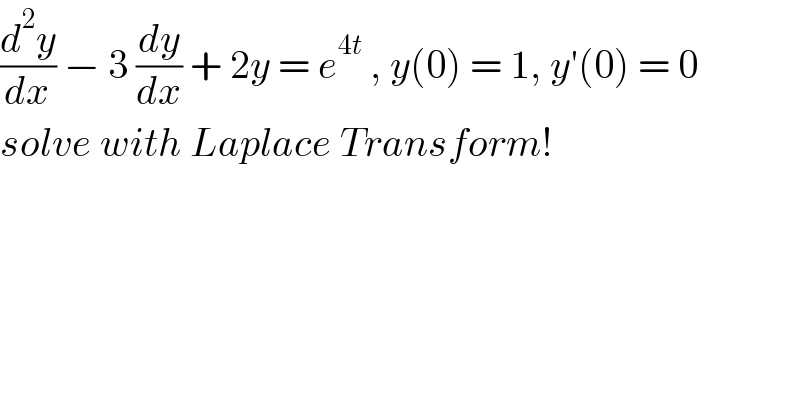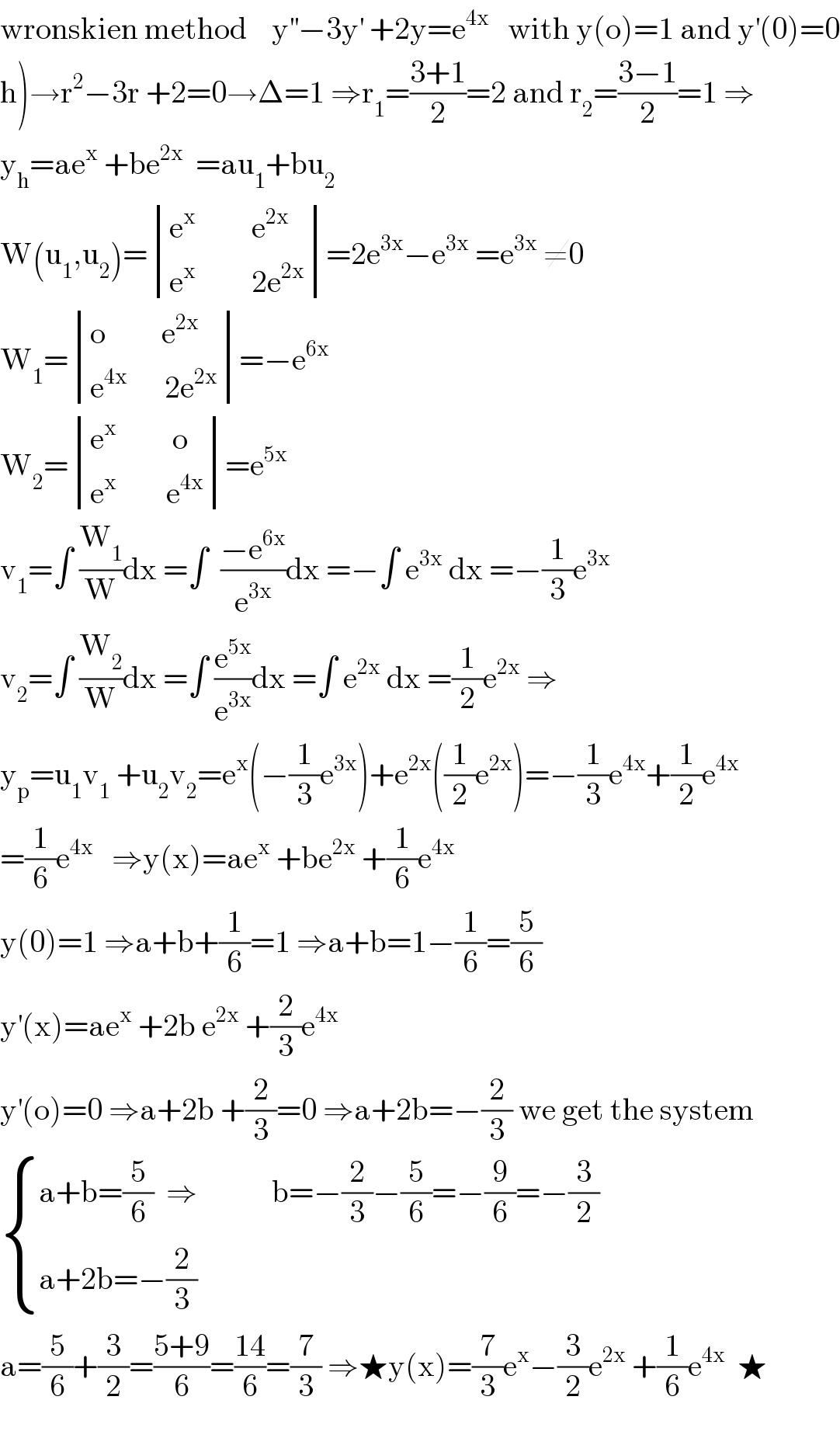
Question and Answers Forum
Previous in Differential Equation Next in Differential Equation
Question Number 126620 by fajri last updated on 22/Dec/20

Answered by Olaf last updated on 22/Dec/20
![(d^2 y/dx^2 )−3(dy/dx)+2y = e^(4t) [p^2 L(y)−py(0^− )−y′(0^− )]−3[pL(y)−y(0^− )] +2L(y) = (1/(p−4)) (p^2 −3p+2)L(y)−p+3 = (1/(p−4)) (p−1)(p−2)L(y) = (1/(p−4))+p−3 L(y) = ((1+(p−3)(p−4))/((p−1)(p−2)(p−4))) L(y) = ((7/3)/(p−1))−((3/2)/(p−2))+((1/6)/(p−4)) L^(−1) oL(y) = y = (7/3)e^t −(3/2)e^(2t) +(1/6)e^(4t)](Q126623.png)
Commented by fajri last updated on 22/Dec/20

Answered by mathmax by abdo last updated on 22/Dec/20

